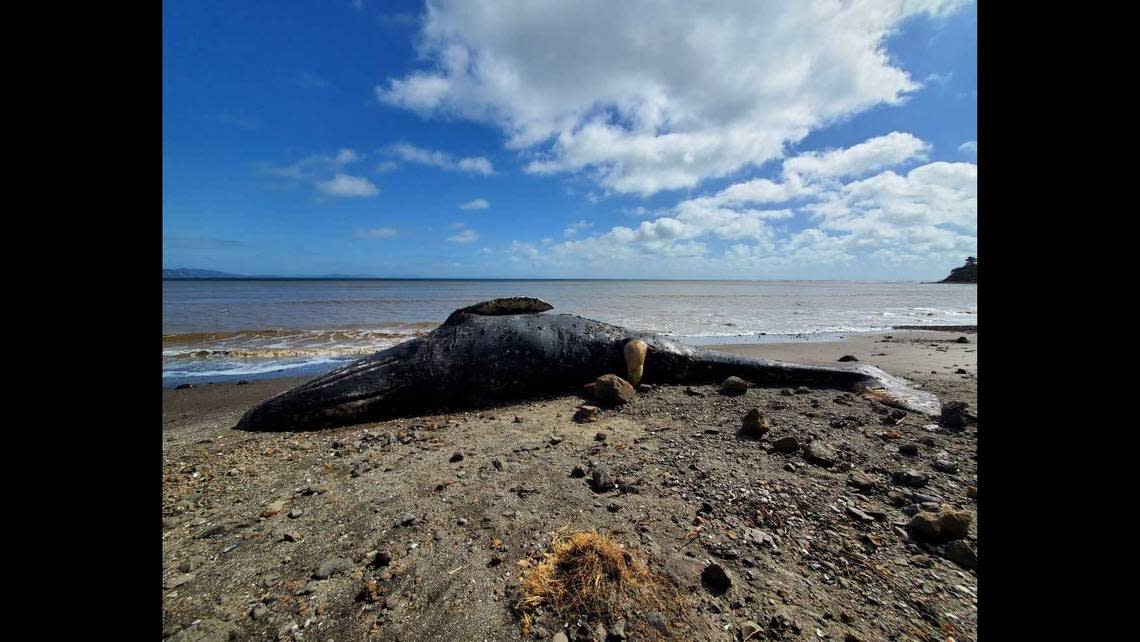Gray whale was found dead on California beach. Now experts know what likely killed it

The death of a gray whale found last week on a California beach was most likely human caused, a nonprofit suspects.
While conducting a necropsy, scientists from The Marine Mammal Center and California Academy of Sciences determined the whale — found March 23 on Bolinas Beach — likely “died from blunt force trauma due to vessel strike,” according to a March 30 news release.
The necropsy also showed the 35-foot whale had a “normal body condition based on the fat stores and blubber layer” and, based on decomposition, likely died two days before the exam, according to the nonprofit mammal center.
“It was a relief to see this young male gray whale in such good body condition with a thick layer of blubber and lots of fat and oil,” Moe Flannery, with the California Academy of Sciences, said in the release.
Though this whale marks the first “stranding of the year in the Bay Area,” the whale’s “good body condition” shows the “species is doing better now compared to the last few years,” Flannery said.
By investigating deaths of marine animals, the center said it can spot “changing environmental trends as well as human impacts.”
Pádraig Duignan, the nonprofit’s director of pathology, said in the release that gray whales “are ocean sentinels due to their adaptability and foraging habits.”
“They have a lot to tell us about the health of the ocean, so to see the species continue to face the added threats of human interaction should concern all of us,” Duignan said, while adding that necropsy investigations are key to creating data “to find actionable solutions.”
The western North Pacific population of gray whales is considered to be endangered, according to National Oceanic and Atmospheric Administration Fisheries (NOAA Fisheries).
NOAA Fisheries declared an ongoing unusual mortality event for the species after seeing a higher number of “dead gray whales washing ashore in poor body condition since early 2019” during migration, the center said.
Since the start of the unusual mortality event, the number of migrating gray whales “along the West Coast has dropped 38%” to about 16,650 from a 2016 peak of 26,960, NOAA estimates, the center said.
The most common causes of death for gray whales include “malnutrition, entanglement and trauma from vessel strikes,” according to the center.
Currently, gray whales are migrating “north along the Pacific west coast from their mating and birthing grounds near Baja, Mexico, to their traditional feeding grounds in Arctic waters,” the center said.
Bolinas Beach is about 30 miles northwest of San Francisco.
11 sharks wash up on South African beach, researchers say. Their livers were missing
Dead whale is the 7th to wash up recently in NJ. What an early investigation found
Endangered whale’s severely injured body washes ashore in Oregon, video shows


